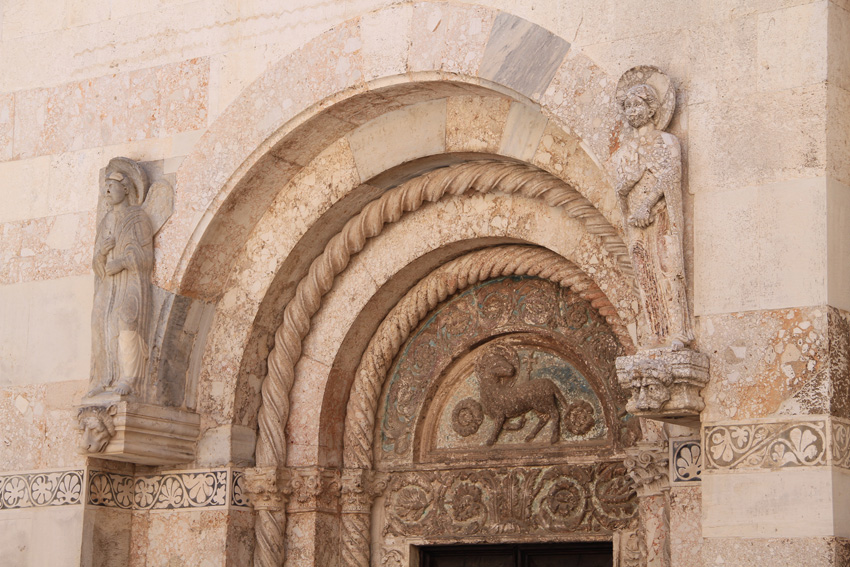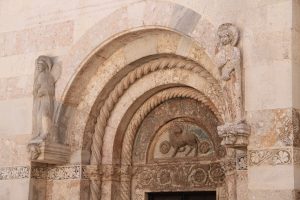The Cathedral of St. Anastasia in Zadar is the seat of the Archdiocese of Zadar, and the largest church in Dalmatia on the Croatian coast. The church’s origins date back to a Christian basilica built in the 4th and 5th centuries, while much of the currently standing three-nave building was constructed in the Romanesque style during the 12th and 13th centuries. The site has been submitted to UNESCO’s Tentative List of World Heritage Sites.
The first known bishop in Zadar was Felix – he attended two church councils, the first in Aquileia in 381 and the second in Milan in 390. The basilica’s original patron was St. Peter. During the time of bishop Donatus, the diocese received the ashes of Saint Anastasia of Sirmium from Emperor Nikephoros I, whom the cathedral took as patron. Donatus commissioned a sarcophagus for the remains, which are still held in the cathedral. The church was largely remade in the 11th-12th centuries, and reconsecrated by Pope Alexander VII in 1177.
During the siege of Zadar by the Venetians and Crusaders in 1202, the cathedral was heavily damaged. For the entire 13th century the building was under repair. It was reconsecrated on 27 May 1285, although the new building, designed in a similar fashion than Santa Maria della Piazza in Ancona, was completed only in 1324. Pope John Paul II came to the cathedral on June 9, 2003 on one of his last international visits.
The walls and the apse of the sacristy, also known as the chapel of St. Barbara, belong to the oldest parts of the Cathedral, along with the floor mosaic depicting two deer from the early 5th century.

photo ©Pixabay RobertMarinkovic


